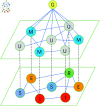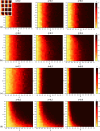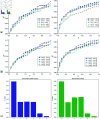Modeling and analysis of infectious diseases based on behavioral game theory on two-layered networks under media coverage
- PMID: 40392798
- PMCID: PMC12091790
- DOI: 10.1371/journal.pone.0320904
Modeling and analysis of infectious diseases based on behavioral game theory on two-layered networks under media coverage
Abstract
The spread of infectious diseases poses significant threats to public health, the economy, and society as a whole. Despite governmental control measures over individual behavior, the public might still be influenced by factors such as costs, expected benefits, and the behavior of others, leading to incomplete adherence to disease control measures. Therefore, this paper proposes a behavioral game theory based infectious disease model on two-layer networks. First, considering the dynamic interaction between individual awareness behavior and disease spreading, a two-layer coupled network of individual behavioral awareness and disease spreading is established. Second, game theory is used to describe the impact of relevant factors on individual awareness behavior. The first layer represents the individual protective behavior game layer, while the second layer represents the disease spreading layer. Government intervention in individual behavior is also considered in the two-layer network model, according to the situation of infectious disease spreading, a threshold model is introduced to control individual protective behavior. Finally, MMCA is used to analyze the disease spreading threshold, and the proportion of the final population state and the spreading threshold under different model parameters are analyzed. The results show that by reducing personal protective costs, increasing individual attention to disease information, and enhancing governmental adjustments to disease control measures, the outbreak threshold of disease spreading can be effectively increased.
Copyright: © 2025 Wang et al. This is an open access article distributed under the terms of the Creative Commons Attribution License, which permits unrestricted use, distribution, and reproduction in any medium, provided the original author and source are credited.
Conflict of interest statement
No authors have competing interests.
Figures













Similar articles
-
A game theoretic complex network model to estimate the epidemic threshold under individual vaccination behaviour and adaptive social connections.Sci Rep. 2024 Nov 25;14(1):29148. doi: 10.1038/s41598-024-79771-8. Sci Rep. 2024. PMID: 39587142 Free PMC article.
-
Modeling human mobility responses to the large-scale spreading of infectious diseases.Sci Rep. 2011;1:62. doi: 10.1038/srep00062. Epub 2011 Aug 12. Sci Rep. 2011. PMID: 22355581 Free PMC article.
-
Epidemic outbreak for an SIS model in multiplex networks with immunization.Math Biosci. 2016 Jul;277:38-46. doi: 10.1016/j.mbs.2016.04.004. Epub 2016 Apr 20. Math Biosci. 2016. PMID: 27105863
-
Complex social contagion makes networks more vulnerable to disease outbreaks.Sci Rep. 2013;3:1905. doi: 10.1038/srep01905. Sci Rep. 2013. PMID: 23712758 Free PMC article.
-
Game theoretic modelling of infectious disease dynamics and intervention methods: a review.J Biol Dyn. 2020 Dec;14(1):57-89. doi: 10.1080/17513758.2020.1720322. Epub 2020 Jan 29. J Biol Dyn. 2020. PMID: 31996099 Review.
References
-
- Moghadas S. Modelling the effect of imperfect vaccines on disease epidemiology. Discrete Cont Dynam Syst - B. 2004;4:999–1012. doi: 10.3934/dcdsb.2004.4.999 - DOI
MeSH terms
LinkOut - more resources
Full Text Sources
Medical

